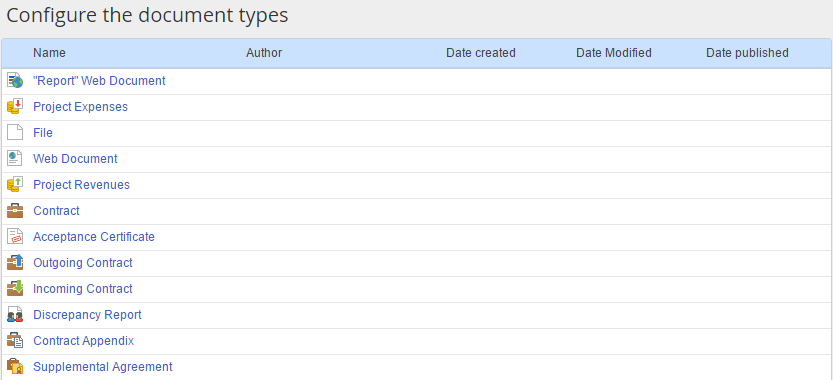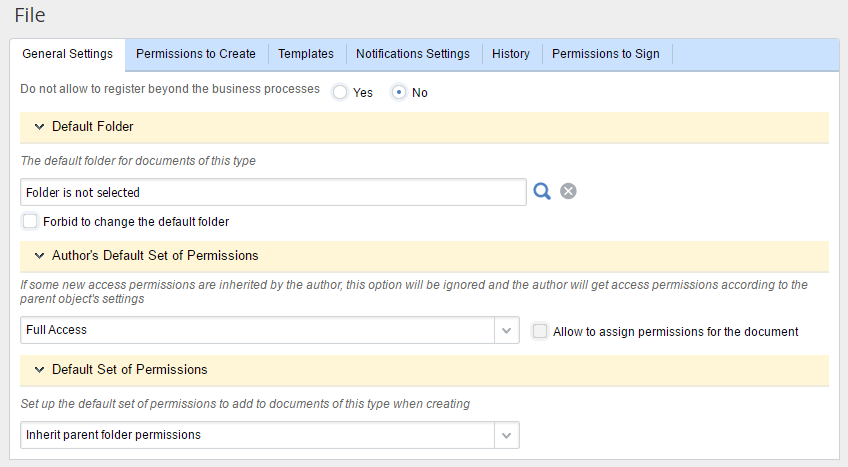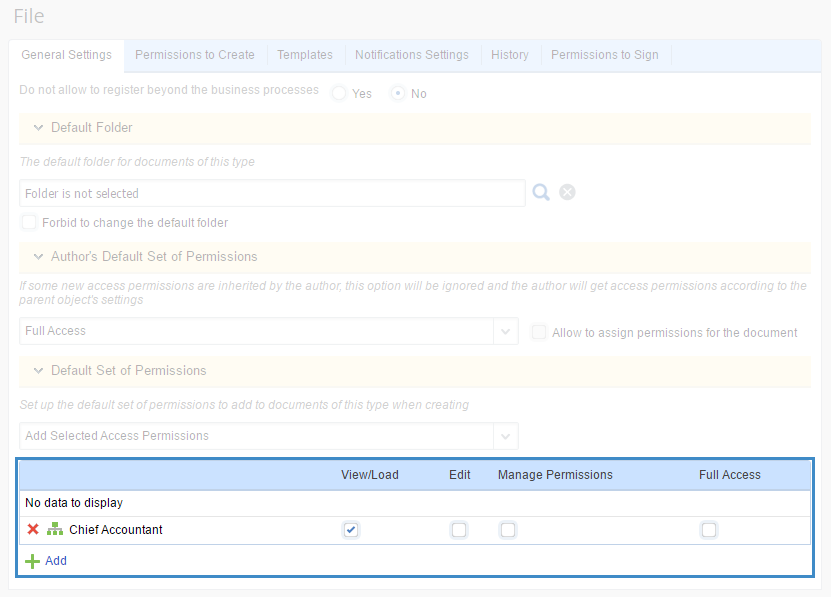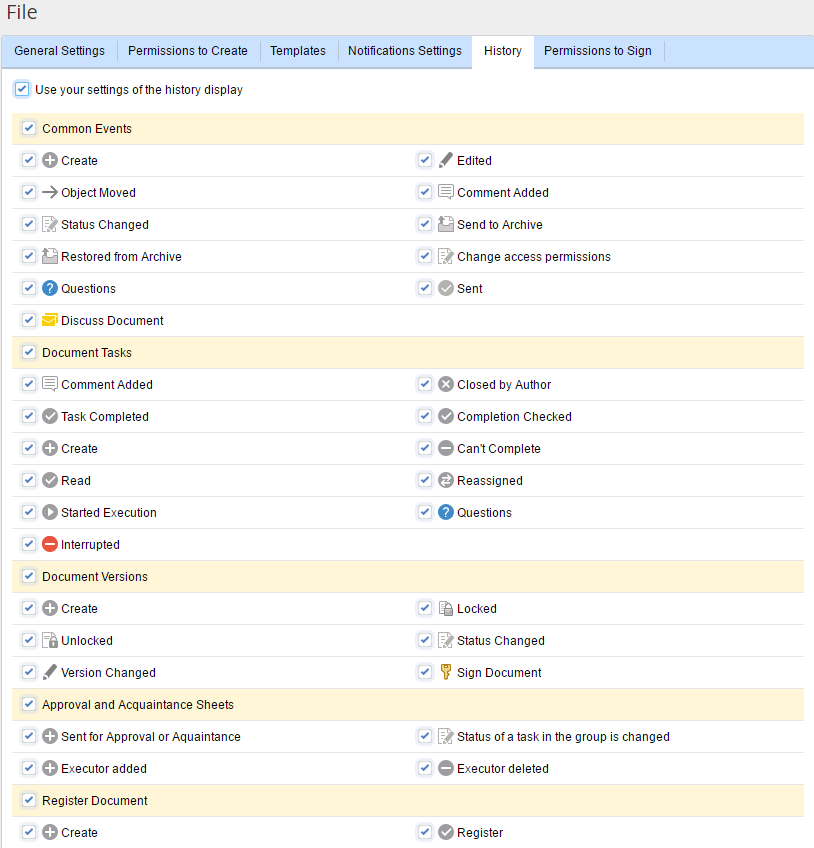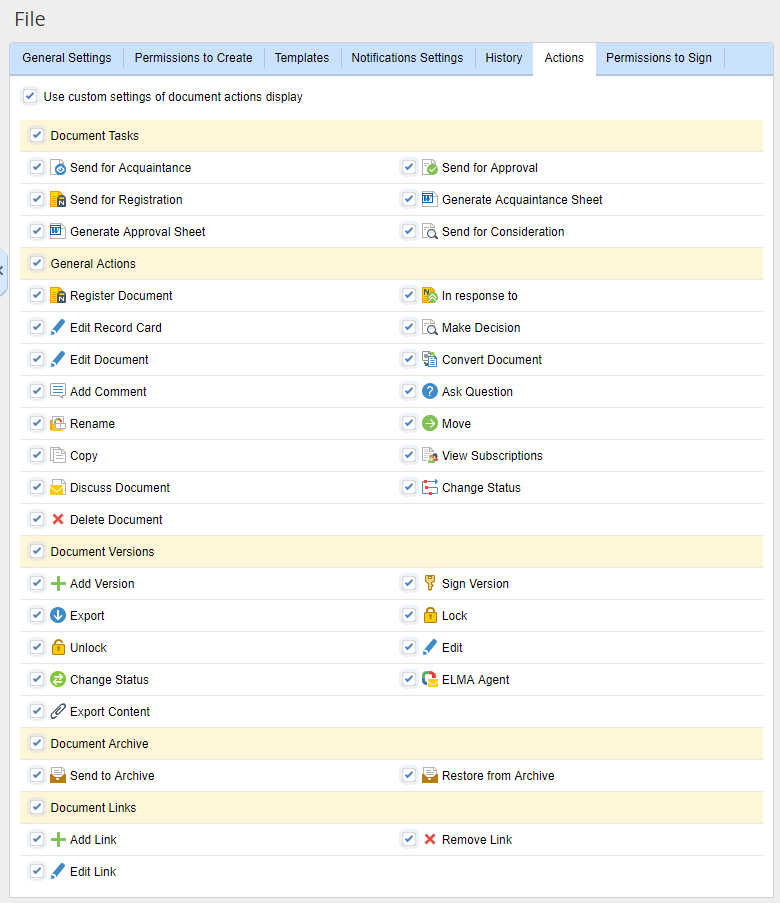Configuring Document Types
You can configure document types in Web Application, in Administration - Document Management - Document Types (fig. 1). This page contains the list of all the document types in the system. Click on the document type you need to configure - the page of the document type settings will open.
|
|
|
Fig. 1. Administration - Document Management - Document Types
|
General Settings tab
|
|
|
Fig. 2. Document type settings, General Settings tab
|
Do not allow to register beyond the business processes:
-
Yes – a document of this type can be registered only within a routing process;
-
Default Folder - folder, which stores documents of this type by default. When you create a document of this type, it will always be saved to this folder, unless the user selects another one. Keep in mind, that the user, who create a document of this type, has to have access to this folder. If the user does not have access, the document will be saved in the user's My Documents folder.
Forbid to change the default folder – when creating a document, users will not be able to change the folder to which the document will be saved.
Author's Default Set of Permissions - in this unit you can select permissions, which will be granted to the document author:
If permissions, inherited from the parent object differ from these ones, then the inherited permissions will be applied.
Default Set of Permissions – in this unit you can select default permissions for documents of this type:
-
Inherit parent folder permissions - inherit permissions to this document type from the parent folder;
-
Inherit parent folder permissions and add extra permissions - inherit permissions to this document type from the parent folder and add other permissions;
-
Add Selected Access Permissions – create a set of permissions to this document type, instead of inheriting permissions from the parent folder;
When you select one of the last two options, a table with permissions levels opens (fig. 3).
|
|
|
Fig. 3. Table with permissions levels
|
To assign access permissions, click Add, below the table. In the opened dialog box select the user, user group or an organizational structure item to assign access to and click Select. Check the boxes with the required permission levels and click Save.
To delete a user from the list, click  .
.
Permissions to Create tab
|
|
|
Fig. 4. Permissions to Create tab
|
On this tab you can select the users, who will have access to create documents of this type.
If the user does not have permissions to create documents of this type, then this document type will not be displayed when creating a document.
Templates tab
On this tab, you can add a document template (fig. 5).
|
|
|
Fig. 5. Document type settings. Templates tab
|
Add Template from File - add a template from an external file.
Add Template from Document - add a template from an ELMA document.
You can add several templates. If you do so, you will have to select one of them when creating a document (fig. 6).
|
|
|
Fig. 6. Selecting a document template
|
Notifications Settings tab
|
|
|
Fig. 7. Notifications Settings tab
|
On this tab, you can select the users, who will receive notifications about the document changes.
History tab
By default, the document history displays all the actions performed with the document. If you need it to display less information, check the User your settings of the history display and select the actions, you want to be displayed in the document history.
By default, any actions applicable to documents are available for a document on its
page and in the
storage. If you need to customize the available actions, check the
Use custom settings of document actions display box (fig. 9) and select the action you want to be displayed on the page of this document type and in the document storage.
If the
Use custom settings of document actions display box is checked, the global document actions display settings will not be applied to documents of this type. To learn more, see the
respective Help section.
Fig. 9. Actions tab
Permissions to Sign
|
|
|
Fig. 10. Permissions to Sign tab
|
Copyright © 2006–2019 ELMA

